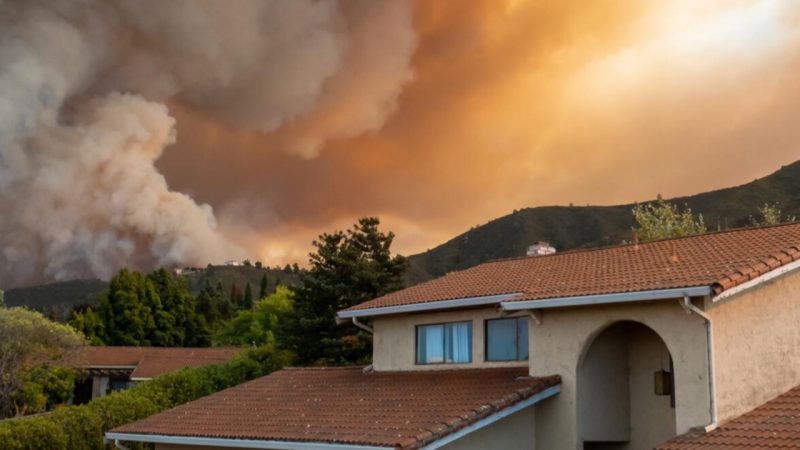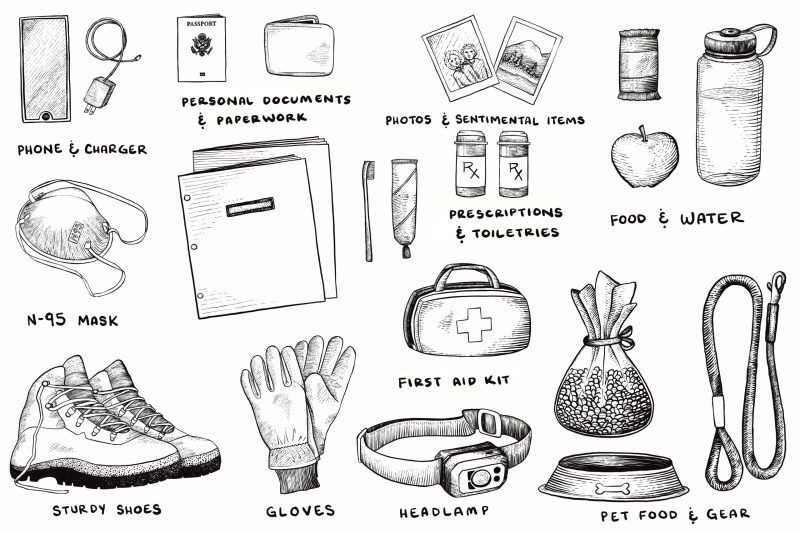
Nick Mott and Justin Angle have written a new book, called This Is Wildfire: How to Protect Yourself, Your Home and Your Community in the Age of Heat. It looks at how historical management practices have led to a problematic fire landscape. It talks about how wildfires affect people and communities, and suggests a way forward. Plus, the book provides checklists for homeowners.
So, are the numbers of wildfires increasing? As the book explains:
It’s not that we’re seeing drastically more fires than ever before … the data show that the number of fire starts each year varies widely, but isn’t changing significantly in one way or the other.
[But] more and more of these fires are ripping out of control into enormous, destructive conflagrations.
Why are fires so much bigger and more destructive now? First, past policy has been to extinguish all fires, leading to unhealthy forests. Second, we’ve developed more land father from cities, spreading out into areas that burn more easily. And third, we live in a warming world, with greater heat and climate-induced drought.

Preparing your home for wildfire
One insight the book shared that I found particularly eye-opening was that:
firefighters will drive right past homes that are likely to burn.
It may sound harsh, but it makes sense. As a fire rolls into a community, firefighters cannot waste time on homes that are not hardened against wildfire. They need to prioritize buildings that have the best chance to survive the fire. So, what do you have to do to set your home up for the best odds of surviving a wildfire? Prepare the home ignition zone, or the 100 feet surrounding your home. This zone is broken down into three areas:
- The immediate zone is the land zero to five feet from your house. You’ll want to clean your roof and eaves and repair siding where flames can easily get in. Hardscape your landscaping around the home. Replace mulch with rocks. Trim trees to keep them from your home. And store vehicles such as lawn mowers or ATVs farther from the house.
- The intermediate zone is five to 30 feet from your house. In this zone you want to keep grass four inches or shorter. Remove ladder fuels (vegetation that can lift flames) and landscape with breaks (avoid clustering shrubs, etc). The crowns of trees should be 18 feet or more apart. Bury propane tanks.
- The extended zone is 30 to 100 feet from your house. In this area, you’re trying to slow a fire down. Remove piles of debris. Removing small trees and having gaps between plantings is important to keep the fire from easily spreading. See the graphic below for more.
This Is Wildfire home preparation

Preparing yourself for wildfire
Imagine a wildfire is approaching. You want to be prepared to move to safety even before the evacuation notice comes in. So, you need a go bag. Have it handy near the door so you can grab it in a rush. And review the contents once a year to refresh items like food and medication.
Some key items for a go-bag can include a sturdy pair of shoes, leather work gloves, goggles, N95 masks, a map, prescription medications, water
bottles, energy bars, spare phone battery, keys and credit cards, a first aid kit, headlamp, a spare toothbrush and toothpaste, personal hygiene items and pet supplies. Add the things that might help keep you sane in the event of an emergency: maybe a pack of playing cards, headphones, a favorite book.

Find more tips to keep safe and to organize your community in This Is Wildfire.
Bottom line: The book This Is Wildfire explains why wildfires seem larger and more destructive. Find tips on preparing yourself, your home and your community for wildfire.
Read more: How wildfire smoke can harm your health, even from far away











